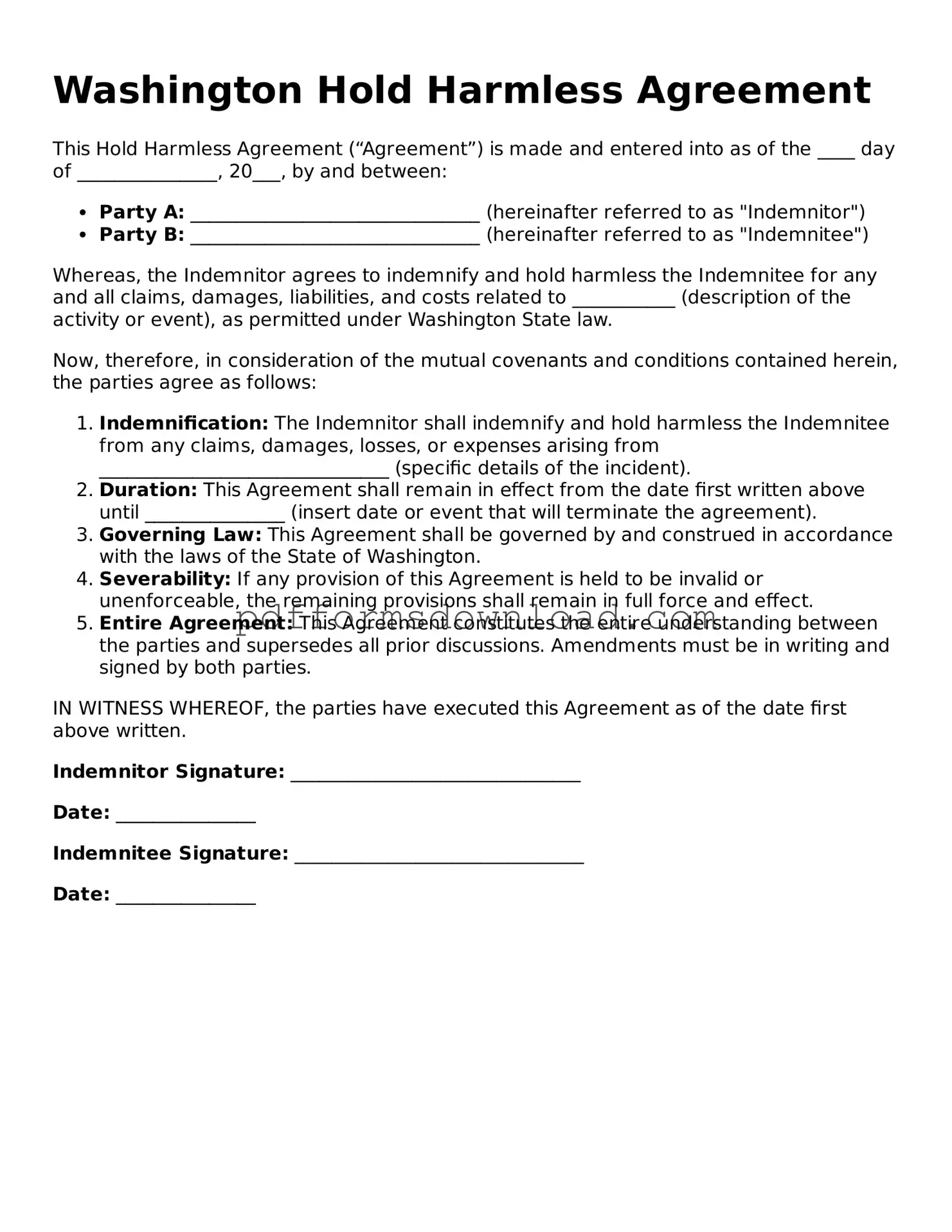What is a Hold Harmless Agreement in Washington?
A Hold Harmless Agreement is a legal document that protects one party from liability for any injuries or damages that may occur during a specific activity or event. In Washington, this agreement is often used in various contexts, such as rental agreements, sports activities, and construction contracts, to ensure that one party does not hold the other responsible for certain risks.
Who typically uses a Hold Harmless Agreement?
This agreement is commonly used by businesses, event organizers, property owners, and contractors. For example, if a property owner rents out their space for an event, they may require the event organizer to sign a Hold Harmless Agreement to protect themselves from potential lawsuits arising from injuries during the event.
What are the key components of a Hold Harmless Agreement?
A typical Hold Harmless Agreement includes several key components: the names of the parties involved, a description of the activity or event, the specific risks being assumed, and the signatures of both parties. It may also outline any limitations on liability and the duration of the agreement.
Is a Hold Harmless Agreement enforceable in Washington?
Yes, Hold Harmless Agreements are generally enforceable in Washington, provided they meet certain legal requirements. The agreement must be clear, unambiguous, and voluntarily signed by both parties. However, courts may not enforce these agreements if they are deemed overly broad or if they attempt to waive liability for gross negligence or intentional misconduct.
Can a Hold Harmless Agreement protect against all types of liability?
No, a Hold Harmless Agreement cannot protect against all types of liability. While it can shield a party from certain claims, it cannot absolve them from responsibility for gross negligence or willful misconduct. Courts typically scrutinize the language of the agreement to ensure it does not violate public policy.
How can one draft an effective Hold Harmless Agreement?
To draft an effective Hold Harmless Agreement, it is essential to use clear and precise language. Define the scope of the agreement, identify the risks involved, and specify the responsibilities of each party. Consulting with a legal professional can also help ensure that the agreement complies with Washington law and adequately protects the parties involved.
What should I do if I have questions about a Hold Harmless Agreement?
If you have questions about a Hold Harmless Agreement, it is advisable to seek legal counsel. An attorney can provide guidance tailored to your specific situation, clarify any uncertainties, and help you understand your rights and obligations under the agreement.
